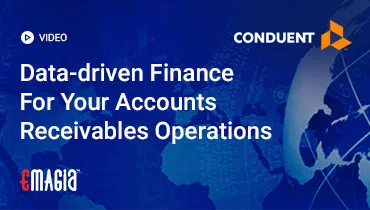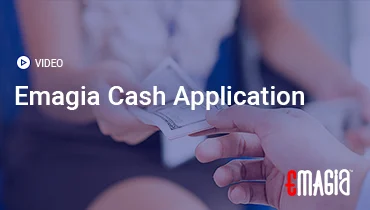Remittance advices are more than just payment notes — they are a cornerstone of efficient financial communication between payers and payees.
In essence, they detail the payments made, the invoices covered, deductions, and any other relevant payment information. Businesses across industries use remittance advice to ensure accuracy in reconciliation, transparency in transactions, and efficiency in accounts receivable and payable workflows.
Definition and Meaning of Remittance Advice
At its core, a remittance advice is a document accompanying payment, explaining what the payment is for and which invoices it covers. Its importance in accounts receivable and accounts payable cannot be overstated — it ensures clarity and serves as a vital record in the accounting process.
The meaning of remittance advice varies slightly between industries, but the principle remains the same — it is proof of payment and a tool for reconciliation. For many organizations, remittance advice is the key to reducing disputes and ensuring accurate accounting.
Types of Remittance Advice
Businesses use different formats of remittance advice depending on industry standards, operational needs, and compliance requirements. Let’s explore the most common types:
Paper Remittance Advice
This is the traditional form of remittance advice, often sent alongside physical payments such as checks. Paper-based formats offer a tangible proof of payment but are prone to delays, manual errors, and storage challenges.
Electronic Remittance Advice (ERA)
ERA is becoming increasingly popular due to the rise of electronic payments. It allows instant delivery of remittance advice alongside payment transfers and integrates easily with ERP and accounting systems for faster reconciliation.
Scannable Remittance Advice
This modern approach embeds scannable codes into the remittance document, enabling instant matching of payments with invoices through scanning tools. It reduces manual processing time and improves accuracy.
Basic vs Detailed Remittance Advice
Basic remittance advice contains minimal information — enough for basic reconciliation. Detailed remittance advice offers a comprehensive breakdown of payment details, making reconciliation quicker and dispute resolution easier.
Importance of Remittance Advice in Accounts Receivable and Payable
A remittance advice acts as a bridge between payment and reconciliation. It’s essential for both payers and recipients to avoid confusion and ensure transparency in financial operations.
In accounts receivable, remittance advice helps apply incoming payments to the correct invoices, reducing errors and speeding up cash application. In accounts payable, it ensures vendors can reconcile incoming funds accurately without delays.
Remittance Advice Process Explained
Understanding the remittance advice process is crucial for implementing it effectively in your organization.
- Payment Initiation: Payments are initiated by the payer using bank transfer, ACH, or other methods.
- Remittance Advice Generation: A detailed document is prepared listing payment details.
- Delivery of Advice: Sent electronically or as a physical document alongside payment.
- Invoice Matching: The payee matches payments with invoices.
- Accounting Entry: Payment and remittance details are recorded.
- Archiving: The advice is stored for compliance and audits.
Benefits of Using Remittance Advice
The use of remittance advice can significantly improve financial processes for organizations of all sizes.
- Transparency in payments and invoice matching.
- Reduction in disputes and reconciliation time.
- Improved supplier relationships due to clear communication.
- Better compliance and audit readiness.
- Efficiency gains and labor cost reduction.
Best Practices for Remittance Advice Management
Effective remittance advice management requires adopting best practices that align with your business objectives.
- Automate advice generation.
- Integrate with ERP systems for real-time updates.
- Maintain consistent formats.
- Provide detailed information in advice.
- Ensure compliance with regulatory requirements.
Automation and AI in Remittance Advice
Automation transforms remittance advice creation and reconciliation by reducing manual input and improving accuracy. AI-powered remittance solutions enhance matching accuracy, identify payment anomalies, and optimize the reconciliation process.
Automation allows faster processing, better cash flow visibility, and improved operational efficiency — critical for large organizations dealing with high volumes of transactions.
How Emagia Helps in Remittance Advice Management
Emagia offers a comprehensive remittance advice automation platform that simplifies reconciliation and improves accuracy. By integrating with ERP systems, Emagia enables seamless payment matching, reduces unapplied cash, and improves accounts receivable efficiency.
Emagia’s AI-driven solutions provide real-time visibility into payment processes, enabling proactive dispute resolution and compliance-ready documentation.
Industry Case Studies
Here are real-world examples of how remittance advice automation transformed financial workflows in different industries:
Case Study: Manufacturing Industry
A large manufacturing firm integrated Emagia’s solution, reducing manual reconciliation time by 60% and improving payment accuracy by 95%.
Case Study: Healthcare Industry
A healthcare provider automated its remittance advice processing, enabling faster cash application and reducing billing disputes significantly.
Case Study: Retail Industry
A retail chain implemented automated remittance advice generation, improving supplier communication and reducing payment delays.
FAQs about Remittance Advice
What is a remittance advice?
A remittance advice is a document sent with payment detailing invoice numbers, amounts paid, and any deductions.
Why is remittance advice important?
It ensures transparency, reduces disputes, and improves payment reconciliation efficiency.
What is the difference between ERA and paper remittance advice?
ERA is electronic, faster, and more accurate, while paper is manual and slower.
How does AI improve remittance advice processes?
AI enhances invoice matching, detects anomalies, and reduces manual reconciliation efforts.
What are best practices for remittance advice management?
Automation, ERP integration, consistent formatting, and detailed documentation are key best practices.



